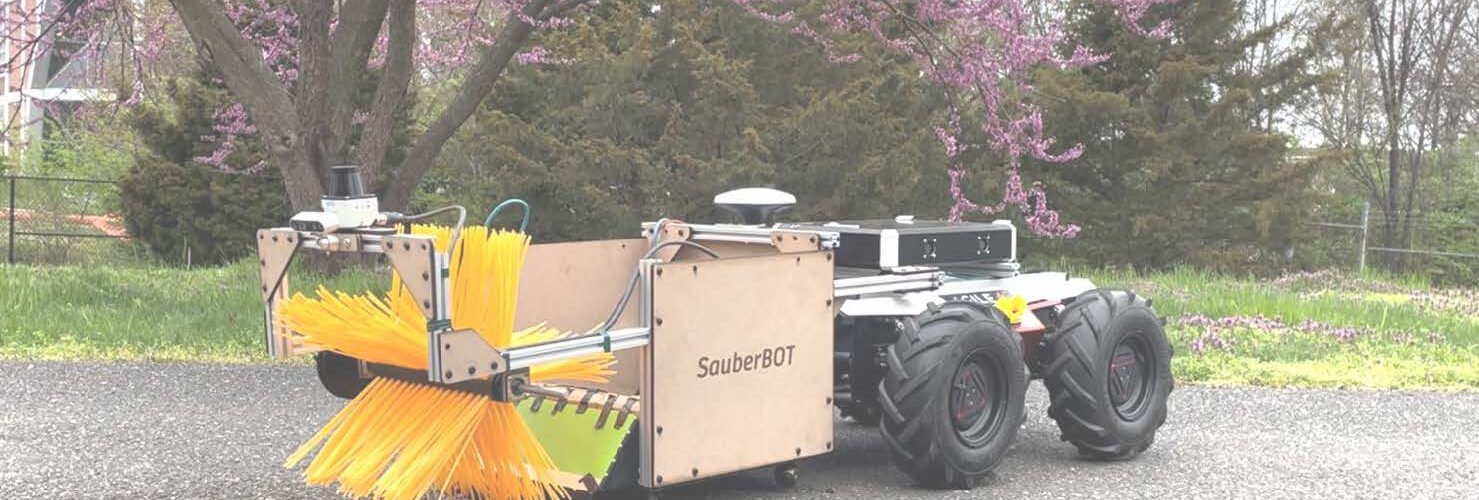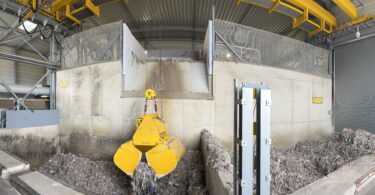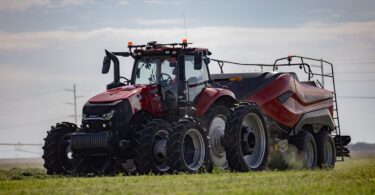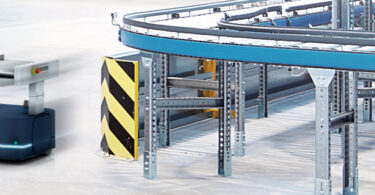University students from around the country participated in the Fourth Annual TiM$10K Challenge with SICK LiDAR technology
In 2018, SICK announced a challenge for universities across the nation to further support innovative ideas in automation and technology. After taking last year to re-evolve the TiM$10K Challenge, the contest is back for its fourth year. 15 different teams from 11 different schools were supplied with a 270° SICK LiDAR sensor (TiM) and were given the opportunity to solve a problem, create a solution, and bring a new application to any industry that utilizes the SICK LiDAR.
“This is one of my favorite days. I love being able to see students find creative ways to use our products to solve real-world problems,” said Dan Minnich, Head of Marketing at SICK.
Students use this unique contest to develop solutions for today and the very near future, using LiDAR in new and creative ways.
About the Challenge
University teams were required to submit a video and paper showcasing their project for judging. A panel of judges decided the top three teams based on the creativity and innovation of the application, ability to solve a customer problem, entrepreneurship of the team, commercial potential, and their ability to market and produce the product.
“Not one technology and not one sensor solves an application, but rather it is a combination of many. Only one sensor is provided, but we love to see what people decide to market and create,” said President Dave Szczepanski, President at SICK, Inc.
The top three teams win a cash award: $10K for first place, $5K for second place, and $3k for third place. The first-place team, with their advising professor, also wins an all-expenses paid trip to SICK’s global headquarters and manufacturing facility in Waldkirch, Germany, while also exploring the local scenery.
Utilizing the LiDAR Sensor Technology
Students are provided with a SICK LiDAR sensor (TiM) and a license to AppSpace, a SICK developed eco-system where an individualized SensorApp can be developed for the TiM-P LiDAR. The LiDAR sensor (TiM) uses a rotating pulsed laser that can calculate distances to its surroundings based on the time-of-flight principle.
The TiM can monitor individualized areas for objects, making it a great tool to solve the potential issues the college students were confronting. While the TiM is used in many industrial applications, including building automation, stationaryrobotics, and mobile robot applications, the goal of the challenge is to make a new application that utilizes the SICK scanner in any industry the students can imagine.
Students were given the chance to collaborate amongst their teams and develop new and innovative projects. There were 15 total submissions, but the winners of the 2022-2023 TiM$10K challenge include:
First Place – SauberBOT
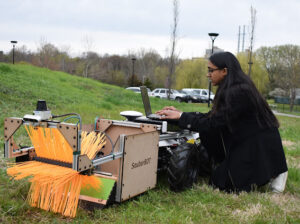 First place went to team 1 from the University of Pennsylvania and their invention of the SauberBot, a robot that “cleans smarter, not harder.” Inspired by the German word for clean, the SauberBOT makes cleaning hazard-free, efficient, and fast. After talking to experts from the cleaning industry, the team’s hope was to ideate a product and a vision that would revolutionize how everyday people and industries clean.
First place went to team 1 from the University of Pennsylvania and their invention of the SauberBot, a robot that “cleans smarter, not harder.” Inspired by the German word for clean, the SauberBOT makes cleaning hazard-free, efficient, and fast. After talking to experts from the cleaning industry, the team’s hope was to ideate a product and a vision that would revolutionize how everyday people and industries clean.
Team members from the winning team include Aadit Patel, Aadith Kumar, Pranav Shah, Rithwik Udayagiri, and Sharon Richu Shaji, and were advised by Nadia Figueroa, Ani Hsieh, and Charity Payne.
When designing the robot, the team’s three main features were modality, simplicity, and safety.
“Our robot is safe. It has an industry-great SICK LiDAR that identifies obstacles in the back with low latency and high precision, ensuring the robot does not collide with anything. Safety of the robot and people around it is paramount,” said team member Richu Shaji. “We are thankful for this amazing opportunity to work with SICK and use their TiM 881P LiDAR. This competition helped us grow both as engineers and entrepreneurs.”
Second Place – PubPark
Current parking enforcements and public parking systems are extremely outdated and inefficient given the capabilities of technology. The current systems in place utilize both chalking and license plate regulation systems typically done by parking enforcement officers, but there is frustration around limited visibility to available public parking along with safety and environmental concerns.
The second-place team from Northeastern University proposed a solution to this problem, coined “PubPark,” a system that tackles both issues involving parking enforcement and public parking. The parking enforcement system can show open parking spots in real time, can ticket parking violations, and gives civilians an opportunity to report parking violations.
Team members include Ang Barrett and Stephen Alt. After completion of this project and after speaking with professionals in the field, the team’s proposed solution is something that has been needed for decades. They hope to take this one step further by developing their invention into a business proposal.
Third Place – SkyView
To apply uninterrupted power to users, power grids must be maintained. With increases in extreme weather events such as hurricanes, floods, and wildfires, inspecting grids is of high importance, but grid inspection can be labor-intensive and time-consuming, and many areas are out of human reach. There is a need for a solution to reduce safety risks and power outages among power grid maintenance – that’s why SkyView was invented.
The third place winners, team 3 from the University of Pennsylvania, created SkyView using the 2D SICK LiDAR sensor to capture data of power lines and its immediate surroundings. It aims to identify potential minor issues in power grids before they become major problems. Because the LiDAR can detect potential threats, the risk of potential power outages and safety hazards should be lessened.
Team members include Swati Gupta, Manasa Sathyan, Jasleen Kaur Dhanoa, Ruchi Rajesh Gupte, and Gaurav Kuppa.
Going forward with this product, the team set seven milestones that they hope to accomplish within the next year, with hopes to develop a business model with prototypes that they can market to customers.
Sign up for TiM$10K!
Interested in signing up for the 2023-2024 TiM$10K Challenge? Find the details here!


